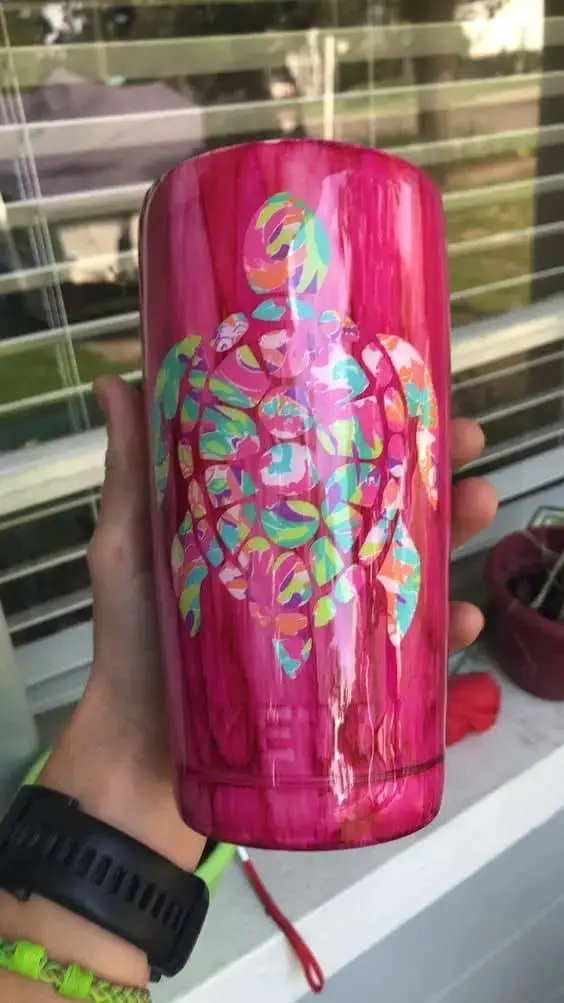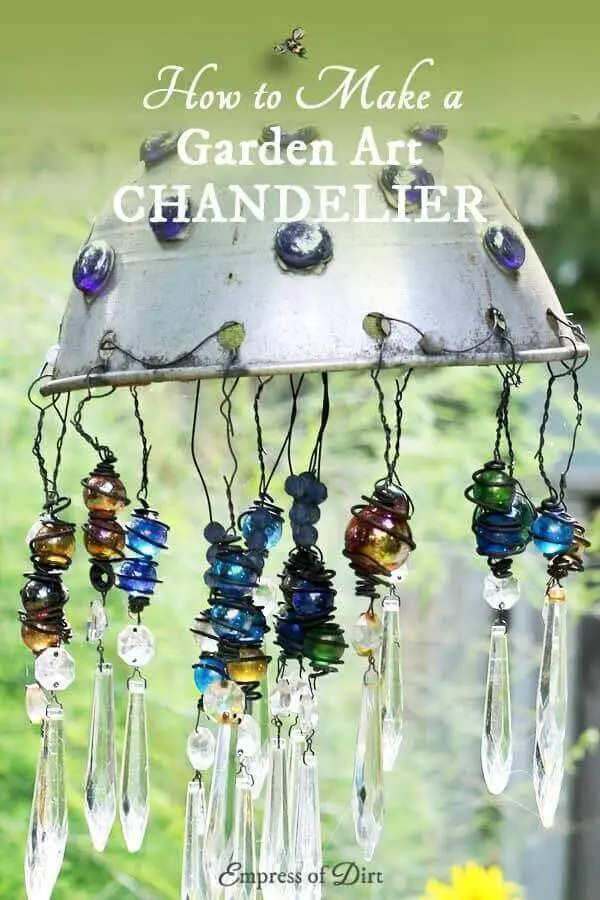20 Types Of Chrysanthemum Flowers: Plant Care & Growing Guide (Photos)
Chrysanthemum flowers, with their vibrant colors and diverse shapes, have captivated gardeners and florists alike. With over 350 varieties to explore, each bloom boasts its own unique personality. From showy blooms that brighten up the garden to versatile arrangements that add a pop of color, chrysanthemums offer something for everyone.
As we delve into the world of chrysanthemums, you’ll discover single mums with delicate petals, quill mums with their feathery plumes, and spider mums that resemble tiny spiders. You’ll also learn about anemone mums, pompon mums, decorative mums, reflex mums, and even spoon mums. From ‘Bolero’ to ‘Moonbeam’, each variety has its own charm.
In addition to exploring the different types of chrysanthemum flowers, we’ll also cover how to plant, care for, and propagate these stunning blooms.
Whether you’re a seasoned gardener or just starting out, our guide will provide you with all the information you need to get started. And if you have any questions, don’t worry – we’ve got you covered with our FAQs section.
So sit back, relax, and let’s dive into the wonderful world of chrysanthemums!
Facts about Chrysanthemum flowers
Chrysanthemums are steeped in cultural significance, with a morbid twist: they’re often used as symbols of death in Japan, where they’re a common feature at funerals. This ancient flower has been cultivated in China for over 2,500 years, earning it the distinction of being both countries’ national bloom.
As part of the Asteraceae family, which includes daisies and sunflowers, chrysanthemums boast over 40 species and hundreds of cultivars, with the garden mum being the most widely grown variety in the US. A kaleidoscope of colors – white, yellow, pink, red, and purple – adorns these flowers, which can range from delicate button mums to show-stopping dinner plate varieties.
While they’re generally low-maintenance, chrysanthemums do have specific needs: basking in full sun, enjoying well-drained soil, and receiving regular watering, especially during scorching heatwaves. Neglect their requirements at your own peril – overwatering can lead to wilted flowers and yellowing leaves.
Types of Chrysanthemum flowers
While chrysanthemum flowers may share a similar name, they come in an astonishing array of varieties, each boasting its own distinct charm. From classic to exotic, some of the most well-known and beloved types of chrysanthemums include those with delicate, dainty petals, robust blooms that command attention, and intricate designs that showcase their artistic merit. These diverse forms only add to the allure of these captivating flowers.
Single Mums.
The chrysanthemum known as the ‘single mum’ or ‘football mum’ is a popular variety, boasting a unique appearance with one row of petals surrounding a central disc. This striking flower comes in a range of colors, including yellow, white, pink, and red. The name ‘single mum’ stems from the single row of petals, which are likened to a mother’s unwavering love and care for her family.
As a popular choice for cut flower arrangements, these blooms also make great additions to any bouquet or centerpiece.
Single mum ‘Bolero’ (Chrysanthemum ‘Bolero’).
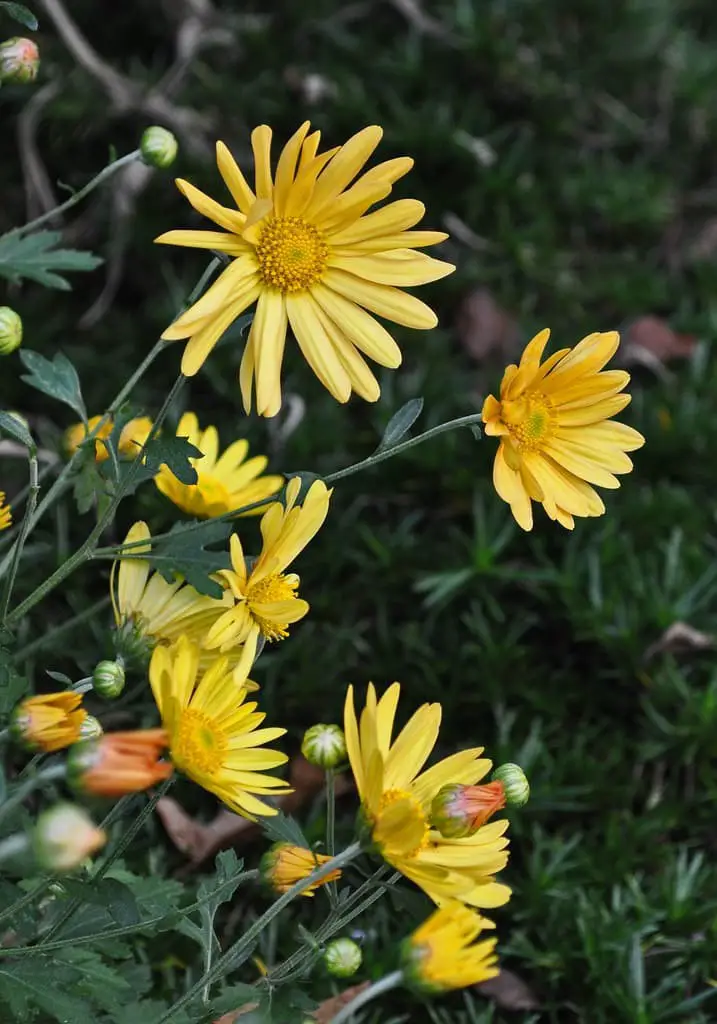
Single mothers, rejoice! Bolero, a striking deep red chrysanthemum, is the perfect addition to your autumn and winter garden displays. This robust flower boasts an impressive flowering period, providing vibrant colour from fall through winter. With its hardy nature, Bolero thrives in most soil types and requires minimal upkeep. To ensure optimal growth, provide it with full sun or partial shade and maintain regular watering.
Single Mum ‘Clara Curtis’ (Chrysanthemum ‘Clara Curtis’).
For those seeking to add a pop of color to their fall garden, look no further than the Clara Curtis chrysanthemum. Named after renowned British horticulturist and author Clara Curtis, this single-flowered variety boasts stunning pink blooms with a delicate white edge. The plant itself is a compact, slow-growing specimen that reaches approximately 30cm in height, featuring glossy dark green leaves and large, double flowers with ruffled petals.
October and November bring forth the vibrant blossoms, making it an ideal addition to beds, borders, or containers. Its beauty extends beyond its natural habitat as well, making it a lovely cut flower option. Consider gifting one of these charming blooms to that special single mum this Mother’s Day.
Quill Mums (Quill chrysanthemum).
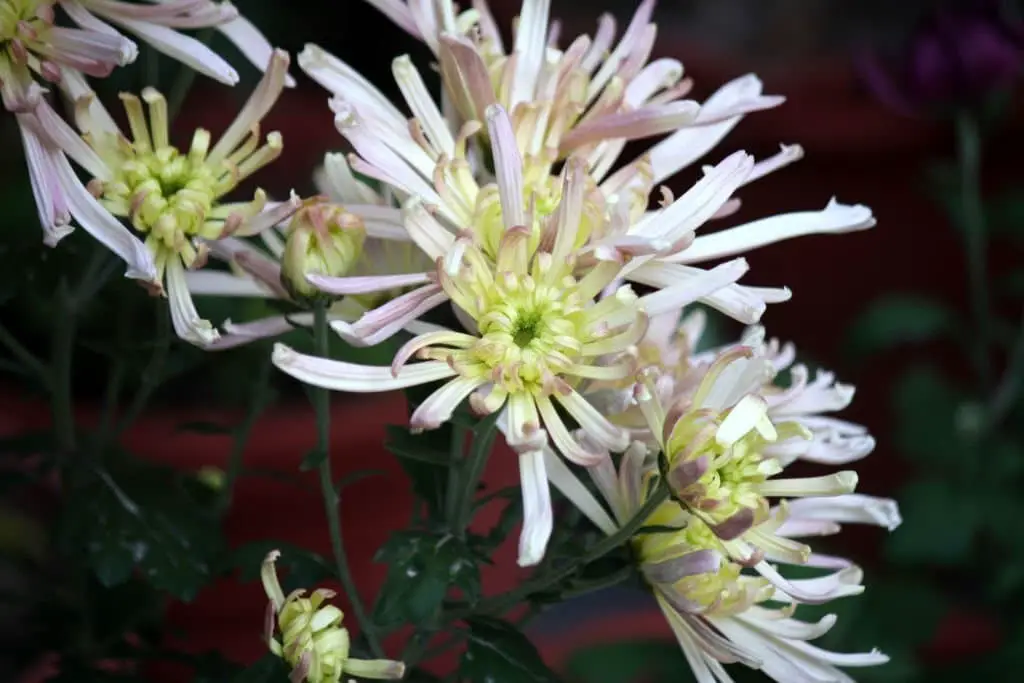
Quill mums are stunning perennials that boast unique, elongated petals. Their vibrant deep pink blooms appear from late summer through early fall, creating a breathtaking display in the garden. These hardy flowers thrive in well-drained soil and can tolerate full sun to partial shade conditions. To achieve optimal growth, space quill mum plants 12-18 inches apart. With mature heights of 24-36 inches and widths of 18-24 inches, they’ll provide a beautiful backdrop for other garden features.
Not only do these flowers look stunning in bouquets, but they’re also relatively low-maintenance and easy to care for. As an added bonus, quill mums are perfect for adding a touch of elegance and whimsy to any outdoor space.
‘Anastasia White’ Quill Mum.
In Australia, a rare and fascinating flower exists – the ‘Anastasia White’ quill mum. This member of the Asteraceae family, closely related to daisies, boasts striking features that set it apart from other blooms. Its slender leaves stretch out like nature’s own brushstrokes, while the flowers themselves are a radiant white with vibrant yellow centers. But what makes this flower truly special is its unique connection to Australia’s indigenous culture.
The quill-like protrusions on its leaves inspired the making of didgeridoos, traditional Aboriginal instruments that have been an integral part of the country’s rich heritage for centuries.
‘Patricia Grace’ Quill Mum.
Patricia Grace’s Quill Mum, a stunning white-flowered plant native to Mexico, was introduced to the United States in the early 19th century. What may seem like delicate quills to the untrained eye are actually modified leaves that serve as natural protection against grazing animals. This hardy and low-maintenance plant is an excellent choice for adding a touch of elegance to any garden, making it a great addition to any outdoor space.
Spider Mums (Spider chrysanthemums).
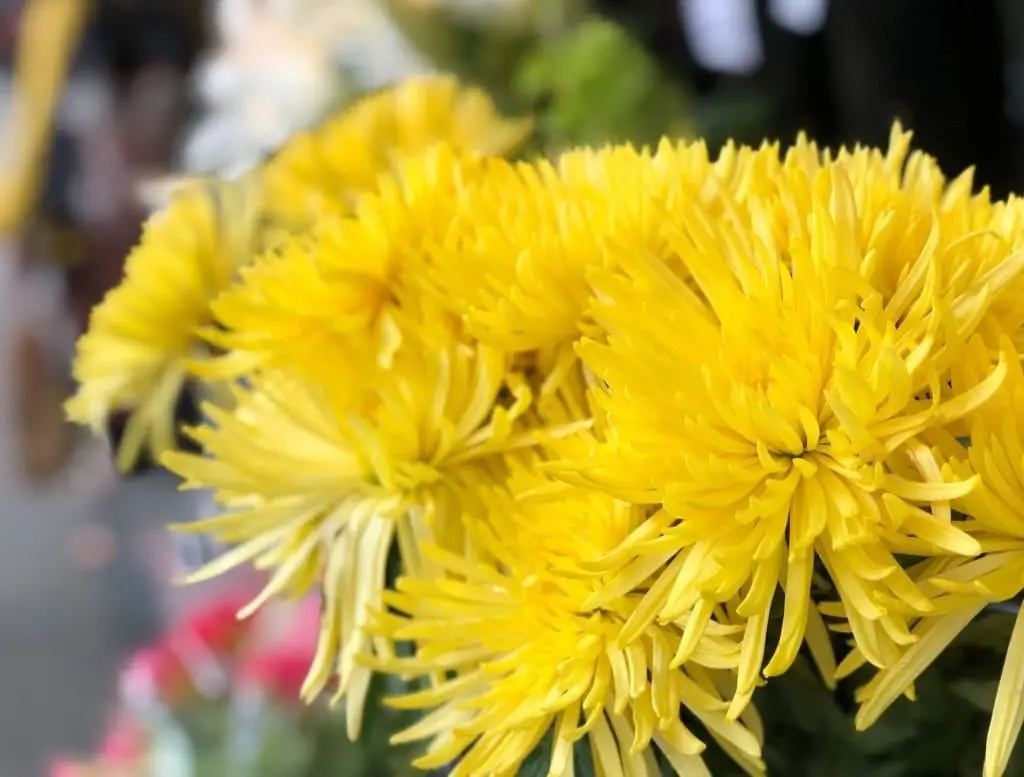
White Spider Mums stand out among their colorful counterparts for me, boasting a unique fragrance that makes them perfect as cut flowers.
‘Symphony’ Spider Mum (Symphony Chrysanthemum).
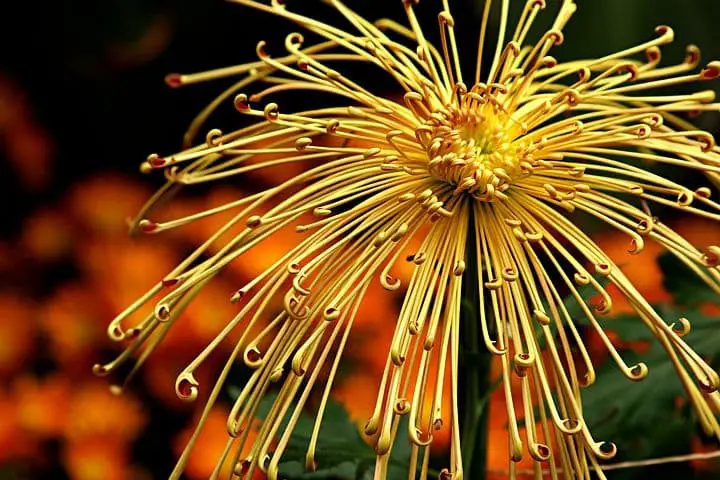
For centuries, symphony chrysanthemums have been prized for their vibrant colors and delicate beauty. Originating from the cross-pollination of garden mums and wild chrysanthemums, this hybrid has been cultivated in China for over two millennia. The resulting plants stand tall at three feet, with a spread of two feet, showcasing an impressive display of foliage. The real showstopper, however, is the blooms themselves.
Measuring four to six inches in diameter, these delicate flowers come in a stunning array of colors – white, yellow, pink, red, and purple. When used in floral arrangements, the ‘Symphony’ spider mum proves particularly popular, with its long-lasting blooms capable of thriving for up to three weeks when cut and placed in fresh water.
‘Chesapeake’ Spider Mum (Chrysanthemum Chesapeake).
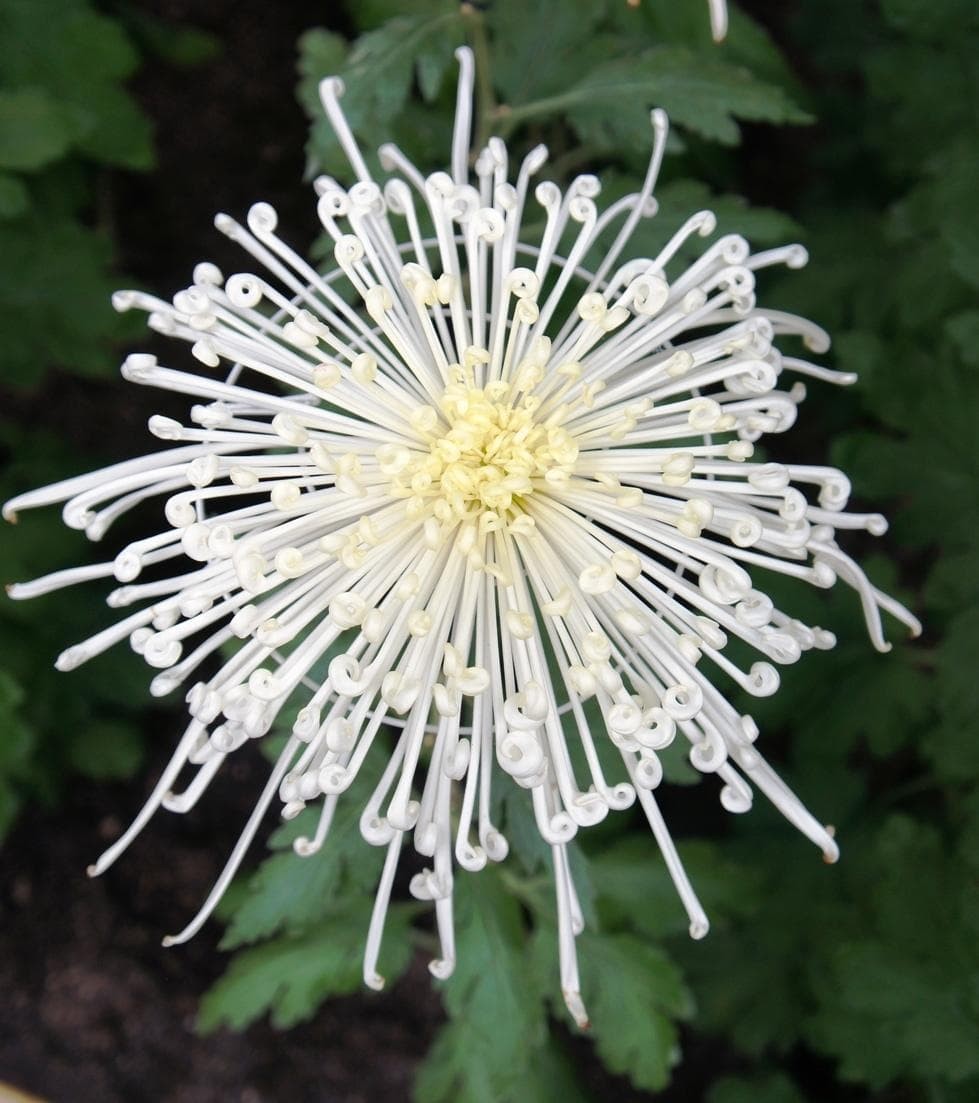
One of the most striking varieties of spider mums is the Chesapeake spider mum, known for its vibrant, large-scale blooms that burst with color. These stunning flowers come in a range of shades, from warm orange hues to bright yellows, making them a standout addition to any arrangement. Not only do Chesapeake spider mums make fantastic cut flowers, but they also retain their beauty when dried, allowing you to create long-lasting, unique arrangements that showcase their natural charm.
Anemone Mums (Anemone Chrysanthemums).
These vibrant flowers come in a stunning array of colors, including white, pink, red, and purple. They’re an ideal choice to elevate any autumnal arrangement. With their impressive vase life and low-maintenance care, Anemone Mums are a delight to work with. To keep them fresh, simply trim the stems and place them in a vase filled with water. Every few days, swap out the water for a new batch, and you’ll be enjoying your beautiful blooms for days to come.
‘Daybreak’ Anemone Mum (Chrysanthemum ‘Daybreak’).
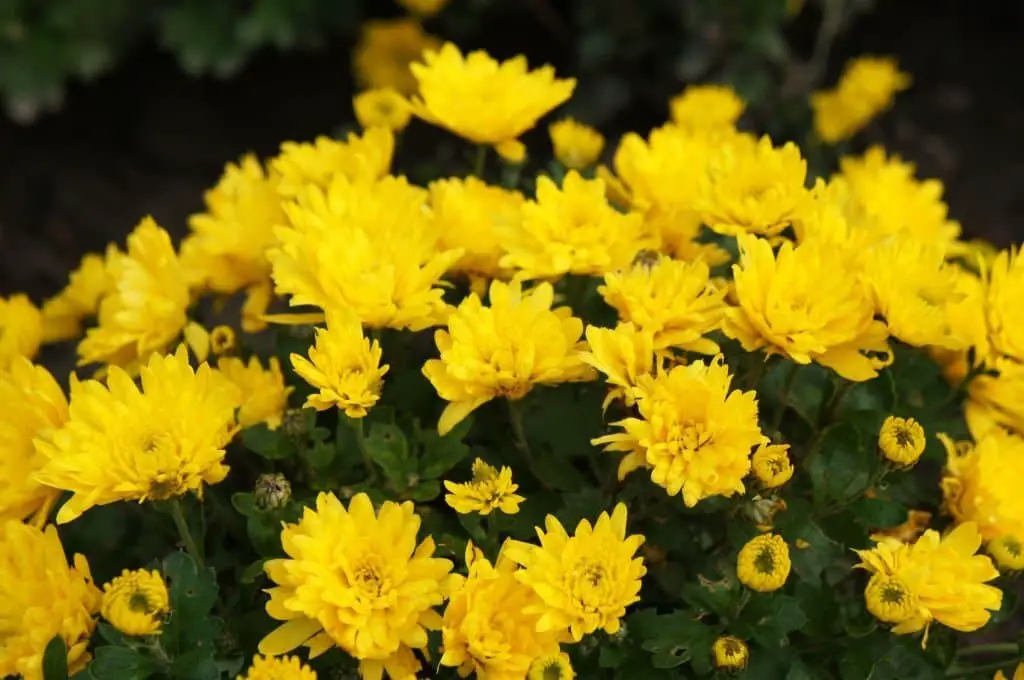
The striking ‘Daybreak’ anemone-type mum boasts vibrant, showy blooms with a deep rose hue and bright yellow centers. Its mounded habit is completely covered in flowers from late summer to fall, making it a stunning addition to any garden or landscape.
This low-maintenance beauty is incredibly easy to grow and thrives in full sun, although it can tolerate some shade.
‘Daybreak’ is impressively heat and drought tolerant, providing season-long color and interest without requiring frequent watering or pruning.
‘Anderton’ Anemone Mum (Chrysanthemum ‘Anderton’).
The ‘Anderton’ Anemone Mum variety boasts stunning deep red blooms, often larger than those of its peers. Its ease of growth and suitability as a cut flower make it a popular choice among garden enthusiasts. For those seeking to inject vibrant color into their landscape, Anderton’s are an excellent option, while also thriving in container gardens, making them a versatile addition to any outdoor space.
Pompon Mums (Pompon Chrysanthemum).
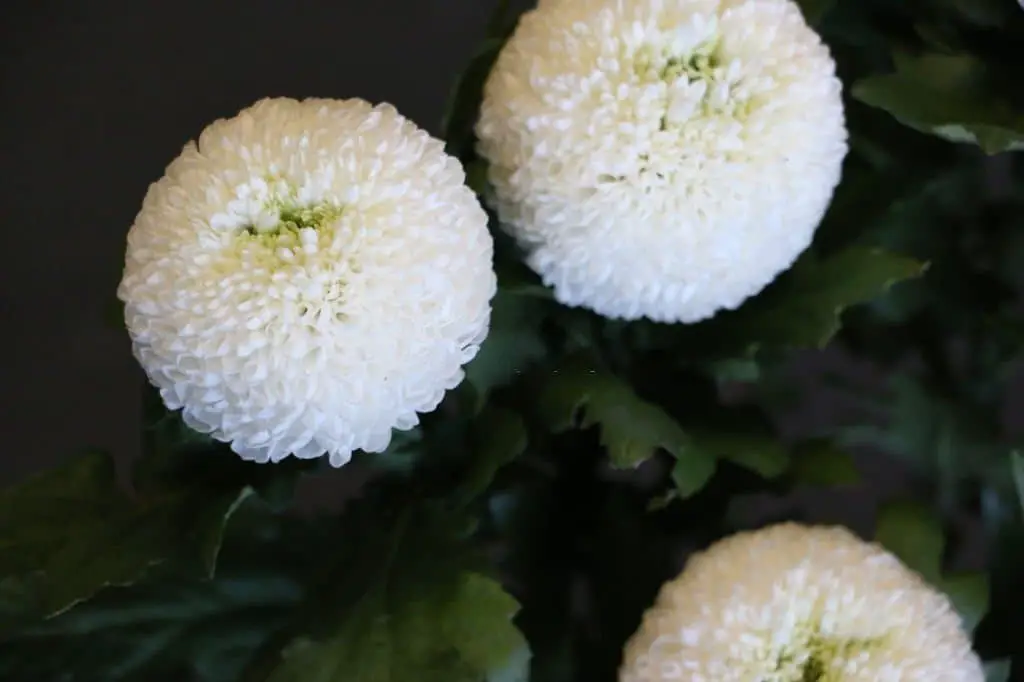
Pompon mums, a unique variety of chrysanthemum, are distinguished by their small, rounded blooms. These charming flowers have earned popularity for use in bouquets and as potted plants, showcasing an impressive array of colors to choose from. Although often linked to the fall season, pompon mums can be successfully planted during either spring or summer, making them a versatile addition to any garden or arrangement.
Pompon Mum ‘Yoko Ono’ (Chrysanthemum ‘Yoko Ono’).
Among the multitude of chrysanthemum varieties, Yoko Ono pompon mums stand out for their unique and captivating charm. The small yet densely packed blooms resemble fluffy pom-poms, earning them their namesake. What’s more, these mums are remarkably prolific, often producing hundreds of flowers on a single plant, making them a true showstopper in any garden.
Introduced in the early 2000s, Pompon mum ‘Yoko Ono’ was named after the renowned Japanese artist and musician Yoko Ono, in tribute to her innovative spirit. For gardeners seeking something new and exciting, this variety is an excellent choice.
‘Moonbeam’ Pompon Mum (Chrysanthemum x morifolium ‘Moonbeam’).
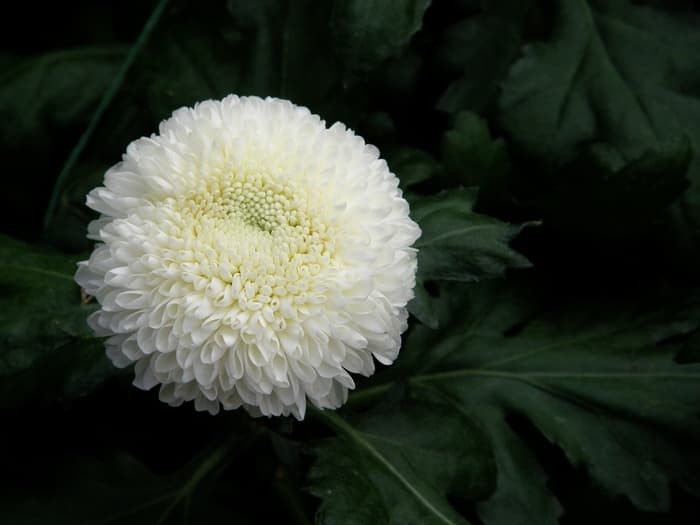
The W. Atlee Burpee Company pioneered the development of this unique hybrid mum, introducing it to the market in 1963. The resulting plant combines the best qualities of garden chrysanthemums and Japanese Hardy Chrysanthemums. Its robust, upright growth habit allows it to reach heights of 18-24 inches (45-60 cm), making it a striking addition to any garden bed.
The blooms are a lovely shade of light yellow, with a double, daisy-like appearance that adds a touch of elegance to the landscape.
As one of the earliest pompon mums to bloom, ‘Moonbeam’ will produce its vibrant flowers from late summer to early fall, providing a delightful splash of color during the transition from warm to cool weather.
Decorative mums.
Decorative mums, a subcategory of chrysanthemums, are prized for their versatility in decoration. Characterized by their vibrant colors and varied sizes, these flowers can either thrive as annuals or endure as perennials. While annual mums only unfurl their beauty once, perennial varieties repeatedly bloom over the course of several years, making them a popular choice among garden enthusiasts.
‘Indian Summer’ Decorative Mum (Chrysanthemum x morifolium ‘Indian Summer’).
The Chrysanthemum, a deciduous perennial belonging to the Asteraceae family, is native to Asia. Its robust growth habit allows it to reach heights of up to four feet, punctuated by vibrant, daisy-like blooms that showcase an array of colors including yellow, red, pink, and white. The ‘Indian Summer’ variety, a popular hybrid developed in the United States, stands out as a crowd favorite among mum enthusiasts.
Thriving in full sun and well-drained soil, this low-maintenance plant is less prone to infestations and diseases. For propagation, gardeners can divide the ‘Indian Summer’ mums during the spring or fall seasons. As a versatile addition to borders, gardens, and even indoor arrangements, these plants bring a touch of autumnal charm to any setting.
‘Coral Charm’ Decorative Mum (Chrysanthemum ‘Coral Charm’).
Hybridized from the florist’s mum and Chrysanthemum morifolium, this stunning plant stands approximately two feet tall and bursts into bloom during mid to late summer. Its vibrant coral pink flowers boast bright yellow centers and are accompanied by a sweet, strong fragrance. As a versatile option, ‘Coral Charm’ excels in borders, beds, and containers alike, making it an excellent choice for floral arrangements as well.
Reflex Chrysanthemums.
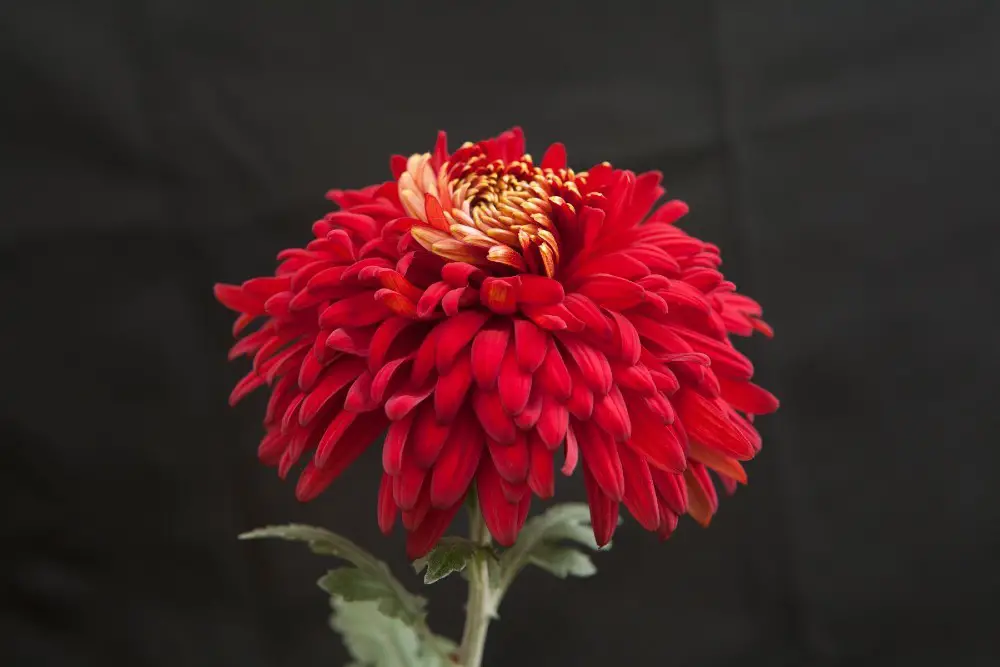
Among the most sought-after varieties of chrysanthemums, reflex types – often referred to as hula or hoopskirt chrysanthemums – owe their distinct charm to the way their petals curve downward, giving them a flowing, skirt-like appearance. This captivating trait is what sets reflex chrysanthemums apart from other types, and it’s a key factor in their enduring popularity.
Available in an impressive spectrum of hues, including white, yellow, pink, red, and purple, reflex chrysanthemums are prized for their versatility and visual appeal. They’re commonly used as cut flowers to add a touch of elegance to bouquets and arrangements, while also being popular choices for corsages and boutonnieres.
Brush or Thistle Chrysanthemums.
With a vast array of chrysanthemum species and cultivars, it’s no surprise that this popular flower comes in an impressive palette of colors. While white, yellow, and pink are among the most sought-after hues, red is also well-represented, although slightly less ubiquitous than its more popular counterparts.
This diverse array of colors is mirrored in the flower’s geographical origins.
Native to Asia and northeastern Europe, chrysanthemums have been cultivated in China for over 2500 years, with records tracing back to this rich history. The early Ninth Century saw them brought to Japan, where they would go on to become an integral part of the country’s cultural heritage.
Spoon mums (chrysanthemum x morifolium).
The term ‘spoon mum’ is derived from the unique shape of its flower petals, which resemble spoons. Native to Asia, these flowers were first introduced to Europe during the 18th century. Characterized by their diverse color palette, spoon mums are known to produce blooms in a range of hues, including white, yellow, pink, red, and purple. Typically, they reach full bloom in late summer or early fall.
‘Starlet’ Spoon Mum.
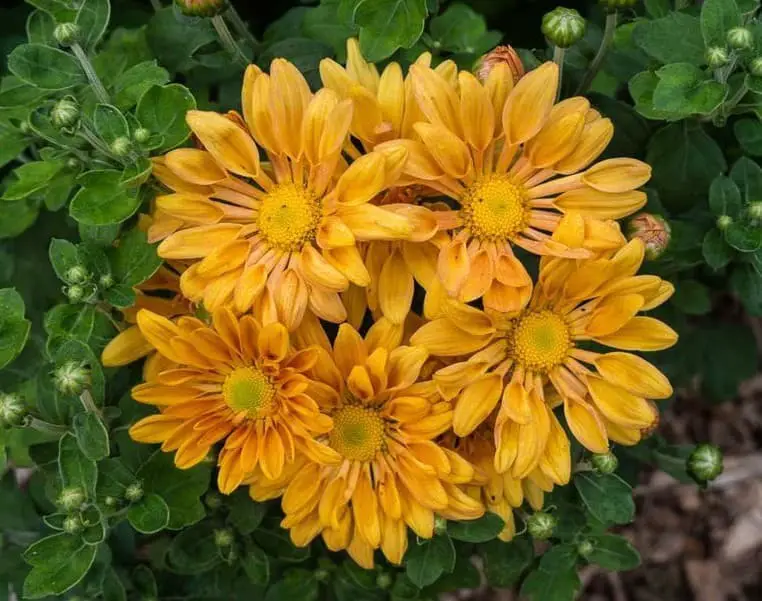
In the heart of Australia’s Queensland and New South Wales, there exists a stunning plant that has captured the hearts of many garden enthusiasts. Starlet spoon mum, with its delicate white flowers and long, slender green leaves resembling tiny stars, is an sight to behold in its natural habitat. The name ‘starlet’ is a nod to this unique feature. What sets starlet spoon mum apart from other plants is its effortless adaptability.
It thrives in full sun and well-drained soil, making it a low-maintenance addition to any garden. Moreover, the plant’s drought tolerance means that you don’t have to worry about frequent watering. This versatility has earned it a spot as a popular choice for gardeners of all levels. Whether you’re starting from scratch or looking to propagate existing plants, starlet spoon mum offers two convenient options: seeds and cuttings.
With its natural charm and practical benefits, this Australian native is sure to bring a touch of magic to your outdoor space.
‘Happy Face’ Spoon Mum (Chrysanthemum Happy Face).
The ‘Happy Face’ Chrysanthemum boasts an undeniable charm in the form of its bright, sunny blooms. The spoon-shaped flowers feature a vibrant deep yellow hue, punctuated by a prominent central black disc that lends them their signature ‘happy face’ appearance. With their robust growth habit and low-maintenance requirements, these cheerful plants are perfect for adding a pop of color to bedding arrangements or cutting gardens.
Cushion mums (Cushion Chrysanthemums).
Characterized by their small size and profuse petal count, resembling pincushions, cushion mums boast hairy leaves and compact growth habits. Indigenous to Asia, these plants were first cultivated in England during the 18th century before being introduced to the United States in the early 19th century. Over time, they have spread globally, with a stronghold in Northeastern and Midwestern American gardens.
While they thrive particularly well in these regions, cushion mums can be successfully grown across the entire country, making them a versatile addition to any garden.
‘Ruby Mound’ Cushion Mum (Chrysanthemum Ruby Mound).
The ‘Ruby Mound’ Cushion Mum boasts a striking deep red hue and an endearing mound-like shape, making it a standout addition to any fall garden or floral arrangement. What’s more, this variety is incredibly low-maintenance, thriving in a range of temperatures and showing remarkable drought tolerance. Whether you’re a seasoned gardener or just starting out, the ‘Ruby Mound’ Cushion Mum is an excellent choice for those seeking ease and beauty.
‘Chiffon’ Cushion Mum (Mum Chiffon).
A charming perennial from the daisy family, the ‘Chiffon’ Cushion Mum is a standout in any garden. Its vibrant flowers burst forth in early to midsummer, providing a stunning contrast against its lush green foliage. This lovely addition is sure to brighten your day with its cheerful blooms.
Incurve Blooms (Incurve Chrysanthemum).
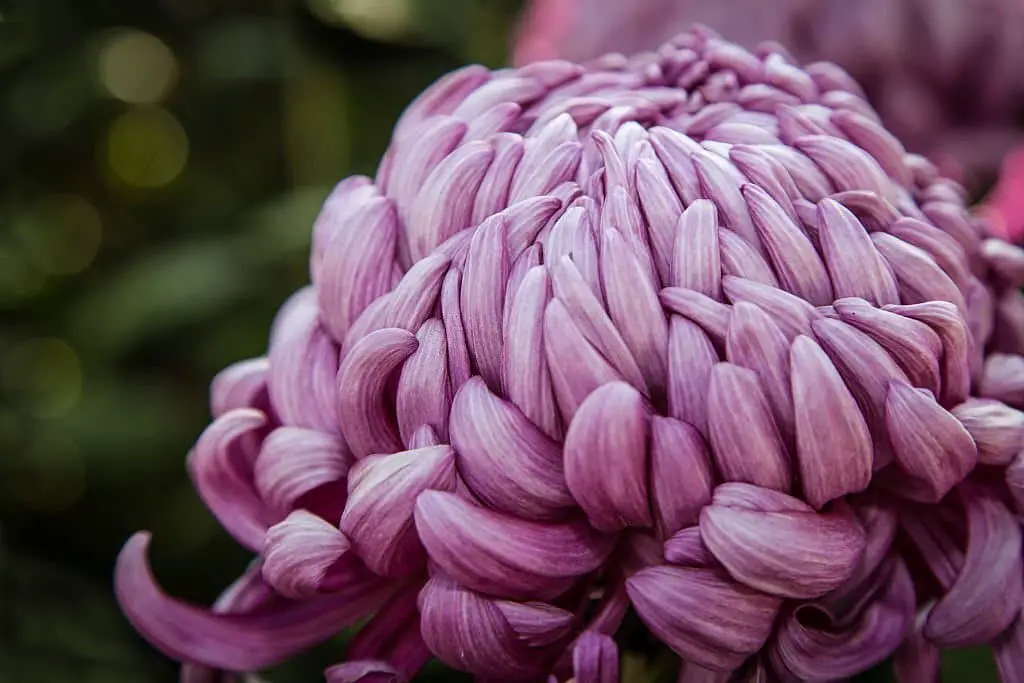
The incurve chrysanthemum’s autumnal bloom is a sight to behold, with its delicate petals unfolding like a tender promise. Native to Japan and China, this enchanting flower was first discovered by European botanists in the 18th century. As a member of the Asteraceae family – think daisies, sunflowers, and asters – the incurve chrysanthemum shares a common heritage with these familiar blooms.
Also known as the Japanese quillflower, this sought-after flower has earned its place in the hearts (and arrangements) of florists worldwide. Its lengthy blooming season is just one of many perks, with a kaleidoscope of colors to choose from – a true delight for any flower enthusiast.
Unclassified Chrysanthemums.
While the world of chrysanthemums is often characterized by predictability, with most varieties falling neatly into distinct categories, there’s a fascinating subset that defies classification. These enigmatic blooms come in an astonishing array of colors – from pure whites and soft pinks to rich purples and every hue in between. What’s more, their shapes are just as varied, with some boasting intricately curled or ruffled petals, while others display sleek, smooth surfaces.
Regardless of their unique characteristics, these unclassified chrysanthemums bring an undeniable touch of whimsy to any garden, making them a thrilling discovery for enthusiasts and casual admirers alike.
Chrysanthemum ‘Emperor of China’.
Chrysanthemum ‘Emperor of China’ is an exemplary addition to any garden, boasting vibrant hues and a natural flair that effortlessly captures attention. As a hardy and low-maintenance ornamental plant, it requires minimal upkeep, yet consistently blooms year after year with remarkable reliability. If you’re seeking a statement piece for your outdoor space, ‘Emperor of China’ is an outstanding option, guaranteed to impress!
Chrysanthemum ‘Clara Curtis’.
Developed in the United States, Chrysanthemum ‘Clara Curtis’ bears the name of its creator, Clara Curtis. This variety gained commercial recognition in 1957 when the Mummerset Nursery in New Jersey introduced it to the market. Notably, this plant can grow up to 30 inches tall and produces large flowers that reach diameters of up to eight inches. The blooms typically display a deep pink hue with yellow centers.
‘Clara Curtis’ has gained popularity for its use in gardens as well as cut flower arrangements. Its hardiness spans USDA zones five through nine, and it thrives in conditions ranging from full sun to partial shade.
How to plant Chrysanthemum.
To cultivate a thriving chrysanthemum garden, begin by preparing the site. Start by digging a hole that is roughly twice the diameter of the plant’s root ball. This will provide ample room for the roots to grow and establish themselves. Next, enrich the soil by mixing in some compost. The added nutrients will help promote healthy growth and encourage blooming.
Once the hole is prepared, gently place the chrysanthemum plant into its new home, making sure the soil level is the same as it was previously. Fill the remaining space with soil and firm it down to prevent settling. For optimal results, be sure to water your plants regularly and provide them with a balanced fertilizer on a monthly basis. With proper care, your chrysanthemums are sure to thrive and bring joy to your outdoor space.
Where is the best place to plant chrysanthemums?
To make the most out of your chrysanthemum planting experience, it’s crucial to choose the right spot for them. A location that receives at least six hours of direct sunlight daily is ideal, as this allows your plants to receive the necessary light to thrive. Additionally, drainage is a vital consideration, as chrysanthemums are not suited for areas prone to flooding or standing water. Instead, opt for a site with well-draining soil to prevent waterlogged roots and ensure healthy growth.
How to care for chrysanthemums
Sun and shade needs.
When it comes to providing the right environment for chrysanthemums, they require a decent amount of sunlight, specifically around five to six hours of direct sun exposure daily. Furthermore, these lovely flowers thrive in conditions where they receive at least one inch of water per week, whether that’s through natural rainfall or irrigation. This ensures their roots are well-hydrated and allows them to grow strong and healthy.
Watering needs.
To give your chrysanthemums the best chance of thriving, it’s essential to understand their unique watering needs. Chrysanthemums thrive in soil that’s consistently moist but not soggy. This means maintaining a regular watering schedule, ensuring the soil never dries out entirely. However, it’s equally important to avoid overwatering, as chrysanthemums are susceptible to root rot if their roots are constantly saturated.
To strike the right balance, check the soil regularly and only water when the top few inches feel dry to the touch. When you do water, make sure to target the soil at the base of the plant rather than getting the leaves wet, which can promote fungal diseases.
Temperature needs.
Chrysanthemums are surprisingly finicky when it comes to their environment, requiring a certain level of coolness to truly thrive. While they can tolerate temperatures between 60 and 70 degrees Fahrenheit, anything hotter or more humid can be detrimental to their health. If the temperature becomes too high, the leaves will droop and the flowers will wilt, while temperatures that are too low can cause the buds to fall off the plant.
It’s clear that these lovely plants have a very specific sweet spot when it comes to climate.
Soil Needs.
When cultivating the ideal environment for chrysanthemums, the first consideration is the pH level of the soil. Aim for a range between 6.5 and 7, as this allows the plants to thrive. To further enhance the soil’s fertility and water retention capabilities, incorporate organic matter such as compost, manure, or peat moss into the planting area. This amendment will not only provide essential nutrients but also help retain moisture, setting the stage for a healthy and vibrant chrysanthemum growth.
With the soil now prepared, it is time to carefully plant your chrysanthemums, ensuring they receive the best possible start in their new environment.
Fertilizing needs.
Chrysanthemums thrive on a regular fertilization routine, with a well-balanced fertilizer applied every two to three weeks ensuring optimal growth. When applying, be mindful of the product’s instructions and avoid excessive use, as this can cause damage. Additionally, take care not to get fertilizer on the leaves, as leaf scorch may occur. To prevent root burn, thoroughly water the plants after application.
Mulching is also crucial for chrysanthemums, as it keeps roots cool and moist, with a layer of two to three inches of mulch providing sufficient coverage. When fertilizing, pull back the mulch from around the base of the plant and then replace it afterwards, taking care not to promote root rot.
Pruning Chrysanthemums.
Chrysanthemums, a flower beloved by many, boast a kaleidoscope of colors. However, when it comes to pruning these vibrant blooms, subtlety is key. To ensure the plant remains robust and resilient, never remove more than one-third of its foliage at once. Instead, spread the pruning over several weeks if necessary, allowing the plant to adjust and recover.
Propagating Chrysanthemums.
To successfully propagate your own chrysanthemums, start by selecting healthy, non-flowering shoots in late spring or early summer. Cut stems to a length of around six inches, ensuring each cutting has at least two leaf nodes. Next, dip these cuttings into rooting hormone and plant them in a well-draining potting mix. Maintain optimal soil moisture, avoiding excessive wetness, and wait for new growth to emerge within a few weeks.
Once you notice the cuttings have taken root, you can transplant your chrysanthemums into individual pots or directly into the garden.
Repotting Chrysanthemums.
Every two to three years, chrysanthemums need to be repotted to maintain their health and promote continued growth. The ideal time for this process is during spring, when new growth begins to emerge. At this stage, gently remove the plant from its current pot, taking care not to disturb the roots. Loosen any compacted or circling roots to prevent further constriction. Then, transfer the chrysanthemum to a new pot that’s only slightly larger than the previous one.
Fill the new pot with fresh, well-draining potting mix and water thoroughly. Finally, place the repotted plant in a bright, sunny location where it can thrive.
Pests and Diseases.
Chrysanthemums are generally resilient plants, but they can be vulnerable to a few common pests and diseases. Among the most notable culprits are aphids, spider mites, and whiteflies – all of which feed on the plant’s sap, weakening it and potentially leading to its demise. Aphids are particularly insidious, secreting a sticky substance called honeydew that can attract sooty mold and encourage fungal growth.
To combat these tiny terrors, gardeners can employ insecticidal soap or horticultural oil to curtail their spread. Spider mites, on the other hand, thrive in hot, dry conditions and can wreak havoc if left unchecked. Chrysanthemums are particularly susceptible to spider mite damage, making it crucial to monitor plants closely for signs of infestation. A simple spray with water every few days can help keep these pests at bay, while insecticides can be used as a last resort.
Whiteflies, meanwhile, are notorious for their ability to rapidly infest and weaken plants. Adult whiteflies flutter around when disturbed, laying eggs on the undersides of leaves that hatch into larvae feeding on sap. To combat whitefly populations, gardeners can remove infested leaves, dispose of them properly, and employ insecticidal soap or neem oil according to label instructions.
FAQs
Are chrysanthemums the flower of death?
While the chrysanthemum is renowned for its vibrant colors and delicate petals, it also holds a somber significance in many cultures. In Japan, this flower is deeply rooted in imperial tradition, often adorning funeral wreaths as a symbol of the emperor. Similarly, in China, the white chrysanthemum is a poignant reminder of mortality, commonly used to convey condolences during times of mourning.
This dual nature of the chrysanthemum serves as a powerful reminder that even the most beautiful and life-affirming things can also be tied to the cycle of life and death.
What is chrysanthemum flower good for?
Not only are chrysanthemum flowers a feast for the eyes, but they also boast numerous health benefits when consumed as a herbal tea. In China, chrysanthemum tea has been a staple remedy for centuries, used to alleviate a range of issues.
The advantages of sipping on this tea include its anti-inflammatory properties, which can help mitigate discomfort and pain; its immune-boosting effects, which enable the body to better defend against illness; and its digestive benefits, which support the body’s natural processes.
How do you use chrysanthemum flowers?
In traditional Chinese medicine, chrysanthemum flowers have been utilised for centuries due to their multifaceted medicinal properties. These properties are believed to include analgesic, anti-inflammatory, and vasodilatory effects. The flowers’ potential health benefits extend beyond relief from physical discomfort, as they may also aid in improving blood circulation.
One of the most common methods of consuming chrysanthemum is by brewing a tea, which is often consumed for its perceived health advantages. This can be achieved by steeping the flowers in hot water.
What type of mums are perennials?
Perennial mums are a popular choice for gardeners seeking low-maintenance beauty. These hardy plants can thrive year after year with proper care, making them an excellent option for adding vibrancy and interest to your landscape without the need for annual replanting. While many varieties of perennial mums exist, it’s crucial to select the right one for your specific climate and garden conditions.
When choosing a perennial mum, consider the following key factors:* Hardiness: With a wide range of hardiness levels available, ensure you select a plant rated for your region to guarantee winter survival.* Light requirements: Most mums require full sun to flourish, though some varieties can tolerate partial shade. Choose wisely based on your garden’s sunlight conditions.* Soil preferences: Mums thrive in well-drained soil.
If your garden has poor drainage or heavy clay, consider planting them in raised beds or containers to prevent waterlogged roots.* Plant size: Perennial mums come in a variety of sizes, from compact dwarf varieties to larger specimens reaching up to six feet tall. Select a size that harmonizes with your garden space.
Conclusion
While the moral of the story may seem simple – don’t judge a flower based on its appearance – it holds a profound truth about appreciating life’s nuances. Just as chrysanthemums come in a diverse array of colors and textures, every individual has their own distinct qualities that make them beautiful in their own way. The next time you encounter someone or something, take the time to notice the intricate details that make them special.
You might just discover a newfound appreciation for the unique charm they bring to the table.
Related Posts
When it comes to sending flowers, it’s natural to wonder if you should tip your flower delivery courier. The answer largely depends on the type of service provided and the quality of that service. Consider the level of effort put into arranging the bouquet, handling any special requests, and ensuring timely delivery. If you’re pleased with the experience, a small gratuity can be a thoughtful way to show appreciation for the florist’s hard work.
On the other hand, if the service was lacking in some way, it might not be necessary to tip at all. As for the flowers themselves, there are many beautiful varieties to choose from, including those with yellow petals and colorful perennials that thrive in partial shade. For indoor gardeners, African violets provide a low-maintenance option, while astilbe plants can add a pop of color to shady areas.
If you’re looking to create a lush shade garden in a cold climate, there are many excellent perennial options to consider.



